Like many, I got interested in online business after reading Tim Ferriss’ book The 4 Hour Workweek.
The idea of setting up a business once, and then having it make money on autopilot sounded awesome.
But it’s only after trying to do exactly that many different times that I discovered what it actually takes to have passive income pay the bills.
And surprise surprise, it takes a TON of work!
Today, 10 years after the book’s publication, the lure of passive income is stronger than ever.
As a result, a whole industry has risen of companies dedicated to remove the friction from running an ecommerce business: AliExpress, dropshipping, Fulfillment By Amazon, etc.
But just because starting an ecommerce business that runs on autopilot is easier than ever, doesn’t mean it’s a good idea.
In this article, I’ll show why it can be a bad idea, and how it might impact your ability to build a business for the long term.
The Fat Bully in the Staircase
If you want to make easy money, guess what, there are plenty of other people that also want to make money without a lot of effort.
More competitors means more people selling the same products which leads to smaller margins until the opportunity disappears
I love this story from start-up investor Paul Graham:
Use difficulty as a guide not just in selecting the overall aim of your company, but also at decision points along the way. At Viaweb (his company) one of our rules of thumb was run upstairs. Suppose you are a little, nimble guy being chased by a big, fat, bully. You open a door and find yourself in a staircase. Do you go up or down? I say up. The bully can probably run downstairs as fast as you can. Going upstairs his bulk will be more of a disadvantage. Running upstairs is hard for you but even harder for him.
So assume that most people will run downstairs. If you do put in the hard work, you’ll be ahead of competitors.
Sometimes there will be established competitors that WANT to do certain things, but their weight will slow them down. Try a new marketing channel, stock that hot new brand.
But it will take them forever to reach a decision. If you’re smaller, you can execute a lot faster.
Deepening The Moat
If you have more things that are unique to your business, your moat is deeper. That means your competitors will have to work harder just to catch up.
And if they don’t catch up in the short term, over time these differences or advantage can really lead to a huge gap.
Amazon has been executing this strategy to perfection with things like infrastructure, fulfilment centers or Prime memberships. Each of these 3 wasn’t the fastest or easiest options. But looking back at it now, it’s very easy to see that they are immensely valuable and part of the reason of why Amazon is so dominant.
They all work together to create Amazon’s flywheel:
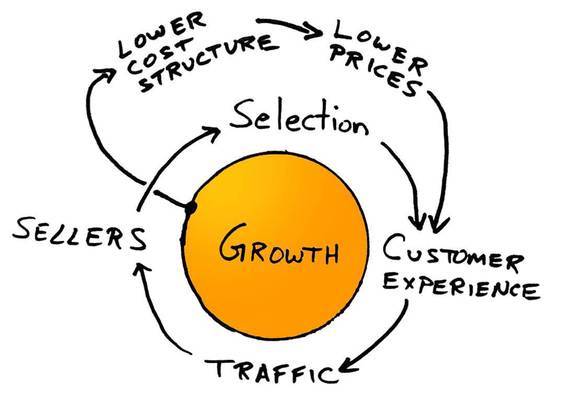
Amazon is a HUGE business, so because of its size, its lessons learned aren’t easy to apply to smaller merchants.
So let’s look at another example. When I started my new store, I started a daily blog to attract more visitors.
And even though I’ve laid the exact plan that I’m following, I know few people will actually do it.
There are two reasons for that: there aren’t any results yet to prove that this approach works and many people underestimate the effort it takes to put out a simple post on a daily basis.
What makes me better suited for this is that I’ve been blogging for over 10 years. I know what kind of results consistent work can produce but also know how much work it takes to blog almost daily.
Most people will think it’s too much work and will try something else. Some will try it but will burn/fade out after the novelty wears off involved, and a couple will actually persist and see the results come in.
Then in 6 months, people will think, damn, I should have started sooner 🙂
My goal for the rest of this article is to show you how you can deepen the moat with one of the most foundational elements: choosing what products to sell.
Your Products Define Your Playing Field
Before we go into finding the products you will sell, I assume you’ve done your homework and have come up with a concept, vision or unique idea behind your store and product offering.
Too many people try to do it the other way around. They pick some products and come up with a concept afterward. That can work, but it often feels fake and artificial.
So if you’ve done that and you’re deciding what products you will sell in your online store, you have three big options:
- Create your own products
- Resell existing products
- A mix of both
1. Create your own products
Having your own products has a huge advantage: no one will have the exact product that you are selling.
There is competition from alternatives, but if your brand is unique, it will be harder for you to copy.
Take a look at the a laptop stand I love and use, the Rain Design mStand.
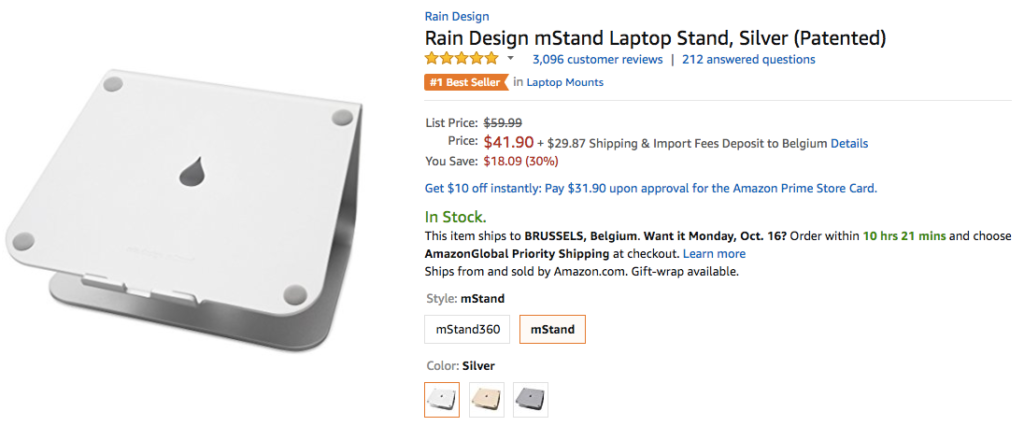
Because it’s selling on Amazon’s platform, they’ve seen exactly how much this product brings in. Amazon didn’t want to miss out, so here is what they came up with:
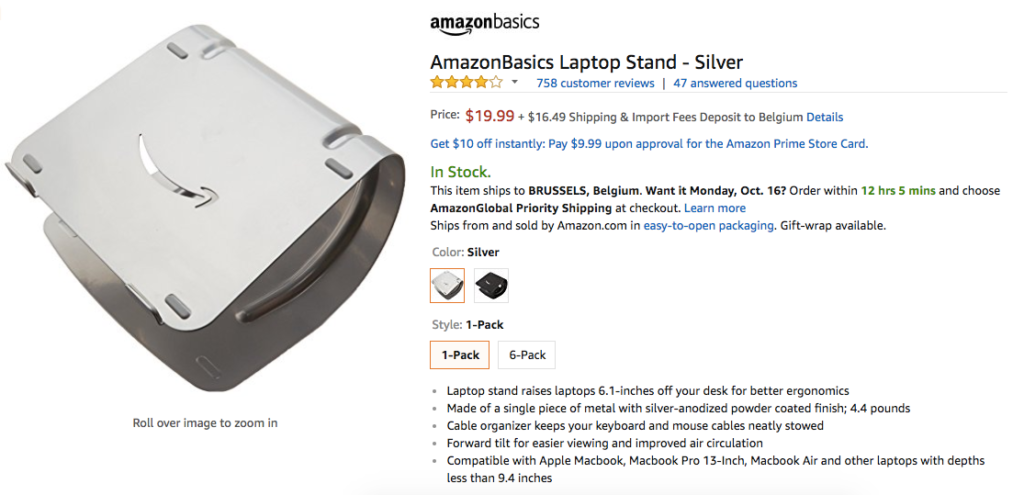
These products are very similar, but they are selling in the exact space, and you can get 2 AmazonBasics laptop stands for the price of 1 Rain Design stand.
Most people won’t care and will go for the cheaper version. But there are some who will go for the one by Rain Design.
Those are people that care about what Rain Design stands for.
That brings us to the first big challenge of creating your own product. Let’s say you can create a high-quality product, that’s superior but more expensive than what’s on the market.
If people don’t know about your brand, they will probably not see or buy you.
So you’ll have to put in the work to build your brand and create that demand.
Another big challenge is that you need to find a supplier that is trustworthy, delivers the quality you need, communicates well and of course, can produce the products at the price you need.
There are plenty of ways to find a good manufacturer: Google Search, attending trade shows, exploring platform like Alibaba, Aliexpress, or hiring a procurement consultant will the right Rolodex.
Imagine the old days before the internet without website or reviews (and with even fewer people speaking English in China!). You’re the only option was to attend tradeshows or use consultants and trust them on their words.
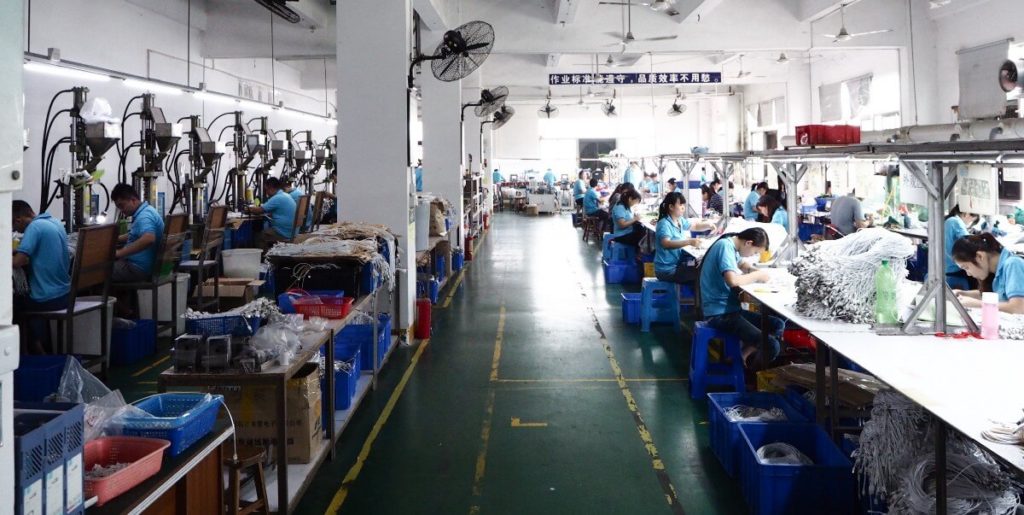
Advantages:
- Unique product
- High margins
Disadvantages:
- No demand until you create it
- Design your own product
- Need to find a reliable manufacturer
- Quality control
- Cash up front
- Large minimum order quantities
- Inventory
As you can see, the list of disadvantages is big, but this is exactly the type of hard work that deepens the moat.
2. Resell other products
If you don’t have any interesting or unique product ideas, or one of those disadvantages is a stumbling block for you, your best bet is to resell products that are produced by others.
Here are the different options to find products to sell:
- Manufacturer
- Distributor
- Dropshipping
Buying products from a manufacturer
This is when you buy existing products from the manufacturer.
The great thing about other brands is that there often is an inherent demand that you can tap into. And if there is not, the brand themselves will make sure they create this demand.
The hardest part is to track down brands and products that would be a good fit for your store.
Then once you have found them, your next job is to convince them to work with you and negotiate a good deal. Some brands are picky who they do business with, others will work with whoever wants their products.
The goal of the brand is to sell as many products as they can. So it’s in their interest to work with various stores to maximize distribution.
So if you’re competing with other stores that sell the same products, you’ll have to put even more time and effort into your positioning and marketing to stand out than if you were creating your own products.
Advantages:
- Buy finished (and quality tested) products
- Built-in demand
Disadvantages:
- Lower margins
- Identical products to the competition
- Need to find good products/brands
- Up front cash
- Large minimum order quantities
- Inventory
Buying products from a distributor
Instead of buying directly from the manufacturer, a lot of brands will work through distributors. This is a middleman that’s responsible for the sales to other wholesalers.
Some of them will hold the exclusive right to a region or country, so if you want to sell products from that specific brand, you will have to go through them.
If you’re buying an existing brand, buying from a distributor is very similar than buying directly. But you’ll have less room for negotiation
Advantages:
- Buy finished (and quality tested) products
- Smaller minimum order quantities
- Built-in demand
Disadvantages:
- Identical products to the competition
- Even lower margins
- Cash up front
- Inventory
Dropshipping
With dropshipping, any order gets automatically dispatched to the manufacturer/distributor who fulfills the order directly to the customer. You don’t need to hold any inventory and don’t need to take care of fulfillment.
The products you sell can be the exact same products than you would buy through a manufacturer or distributor.
I like to look at dropshipping as an extra service by a distributor. And of course, you need to give up margin for that service.
Does this make dropshipping evil? No of course not. It’s just one of the possible ways to fulfill an order.
The part that makes dropshipping evil is thinking that it is the solution to all problems. This idea is peddled by ebooks, gurus, and courses.
Just know that dropshipping in an of itself is not an advantage or a point of differentiation.
It actually is the opposite, from all of the methods of sourcing your products I’ve talked about, dropshipping is the easiest to copy. You just need to find the right contact.
But even that’s getting easier with the rise of these dropshipping apps like Oberlo or print on demand services like The Printful.
With an app like Oberlo, you can automatically import products from AliExpress. This will save you even more work.
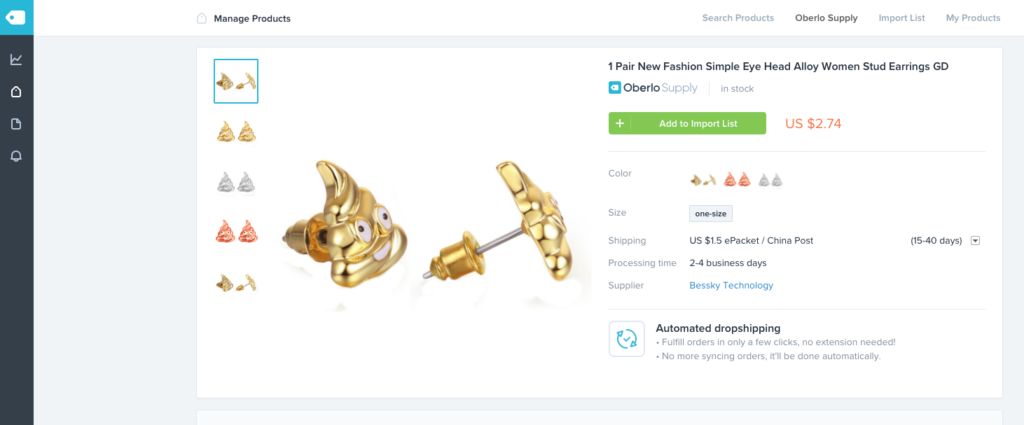
Print on demand services like The Printful take a bit of different angle. They produce custom t-shirts, hats, coffee mugs or posters with a design that you need to provide.
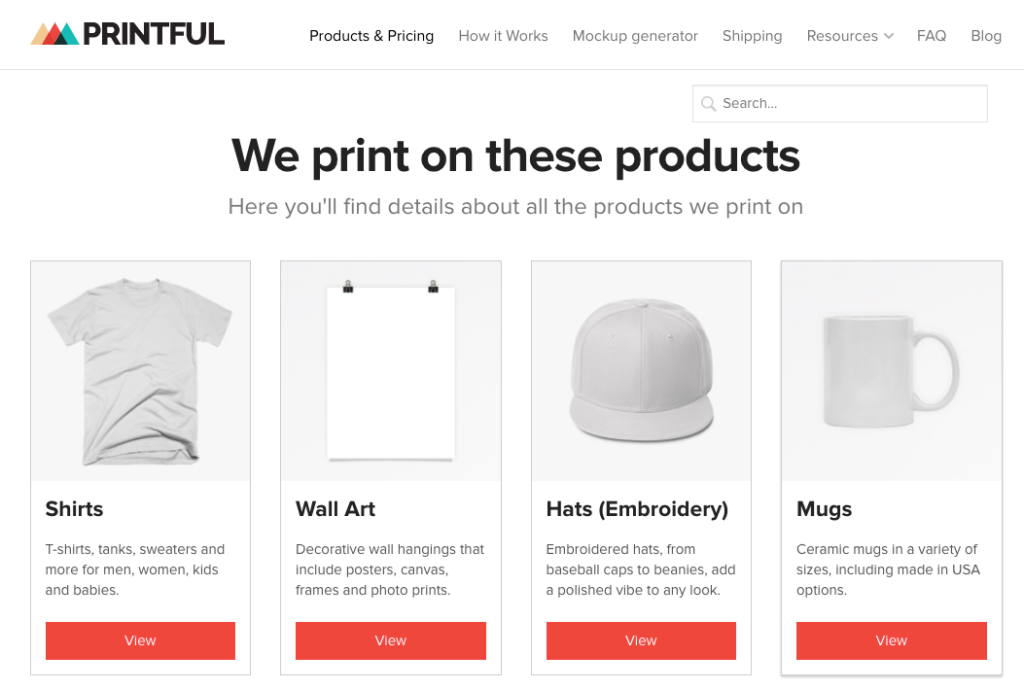
Then every time a product is sold, an order is sent to your printing on demand service to produce and ship that specific item.
This quickly allows you to create a huge collection without the need for inventory. Especially in areas like fashion, this is huge.
Different sizes, colors, and materials can make just holding a few variations really expensive.
This is exactly the approach I took when I set up my own store. I used Shopify and Printful.
Advantages:
- Buy finished (and quality tested) products
- No minimum order quantities
- No cash tied up in inventory
- Fulfillment is taken care of
Disadvantages:
- Identical products to the competition
- Need to find reliable suppliers
3. A mix of both
Now, what should you do?
Create your own products, or start selling products made by others?
I always like to start in the smallest possible way, so to me, creating a new product from scratch is very risky for a new business. Not only is it expensive but you probably haven’t got enough experience to know if it will work.
If you start selling other people’s products first you can get a feel for the industry. What different kinds of customers are out there? Which products are selling well? What are the common margins? Etc.
But more importantly is that you start to build your own audience of customers and email subscribers. Having these people close to you will do wonders when it comes to research and product development.
So by the time you launch, you know people want your products AND you have some buyers lined up 🙂
So How Evil Is Dropshipping Really?
The reason for the polarizing title is there are too many misconceptions about dropshipping.
Both positive and negative.
I hope that this article was able to show you the advantages and disadvantages of the various way of finding products.
And if you’re already running a business that’s 100% dropshipped, have a critical look at how different your business really is. If you’ve picked the easy road in one area, you’ll have to work a lot harder in other areas.
Back to you: what’s your main struggle when it comes to deciding which products to sell?
